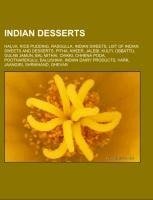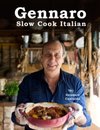
-
 Anglický jazyk
Anglický jazyk
Indian desserts
Autor: Source: Wikipedia
Source: Wikipedia. Pages: 40. Chapters: Halva, Rice pudding, Rasgulla, Indian sweets, List of Indian sweets and desserts, Pitha, Kheer, Jalebi, Kulfi, Obbattu, Gulab jamun, Bal Mithai, Chikki, Chhena Poda, Pootharekulu, Balushahi, Indian dairy products,... Viac o knihe
1 kus skladom u vydavateľa Posielame do 7-10 dní
14.85 €
bežná cena: 16.50 €
O knihe
Source: Wikipedia. Pages: 40. Chapters: Halva, Rice pudding, Rasgulla, Indian sweets, List of Indian sweets and desserts, Pitha, Kheer, Jalebi, Kulfi, Obbattu, Gulab jamun, Bal Mithai, Chikki, Chhena Poda, Pootharekulu, Balushahi, Indian dairy products, Vark, Jaangiri, Shrikhand, Ghevar, Khaja, Sandesh, Laddu, Imarti, Barfi, Ras malai, Sheer korma, Kalakand, Rasabali, Petha, Kozhakkattai, Chhena Gaja, Bebinca, Kakinada Khaja, Zarda, Qubani ka meetha, Anarsa, Mysore pak, Mishti doi, Ariselu, Double ka meetha, Chakka pradhaman, Munthiri Kothu, Tilkut, Kaju barfi, Pantua, Kheersagar, Jhajariya, Basundi, Chhena jalebi, Chhena Kheeri, Cham cham, Besan barfi, Malida, Modak, Kaju Katli, Langcha, Tilgul, Dharwad pedha, Thennai Kozhakkattai, Kalathappam, Sohan Halwa, Unni appam, Fenia, Khurma, Sohan papdi, Kamarcut, Gil e firdaus, Neyyappam, Palathalikalu, Angoori, Singori, Malai Laddu, Kakara pitha, Ladoo flour, Dhondas, Karadantu, Chhena jhili, Kobbari Lavuju, Boorelu. Excerpt: Halva (or halawa, xalwo, haleweh, helwa, halvah, halava, helava, helva, halwa, halua, aluva, chalva, chalwa) refers to many types of dense, sweet confections, served across the Middle East, South Asia, Central Asia, West Asia, North Africa, the Horn of Africa, the Balkans, Eastern Europe, Malta and the Jewish world. The term halva (Arabic: ¿ halwa), meaning "sweet", is used to describe two types of desserts: Halva may also be based on numerous other ingredients, including sunflower seeds, various nuts, beans, lentils, and vegetables such as carrots, pumpkins, yams, and squashes. The word halva entered the English language between 1840 and 1850 from the Yiddish halva. The latter term came from Bulgarian, which in turn came from the Turkish helva, a word which itself ultimately derived from the Arabic al ¿alwa, meaning sweet confection. The Arabic root ¿¿¿¿ ¿alwa means "sweet". Most types of halva are relatively dense confections sweetened with sugar or honey. Their textures, however, vary. For example, semolina-based halva is gelatinous and translucent, while sesame-based halva is drier and more crumbly. This type is made by frying the flour such as semolina in oil into a roux and cooking it with a sugary syrup. This is popular in Iran, Turkey, Somalia, India, Pakistan and Afghanistan. This halva, produced and served in India, Afghanistan, Bangladesh, Iran, Pakistan and surrounding countries (different versions of it are also found in Albania, Azerbaijan, Bulgaria, Cyprus, Greece, Montenegro and Turkey), is usually made with wheat semolina, sugar or honey, and butter or vegetable oil. Raisins, dates, other dried fruits, or nuts such as almonds or walnuts, are often added to semolina halva. The halva is very sweet with a gelatinous texture similar to polenta; the added butter gives it a rich mouthfeel. The standard proportions of semolina halva are one part fat (a vegetable oil or butter), two parts semolina, three parts sweetening agent (e.g. sugar or honey) and four
- Vydavateľstvo: Books LLC, Reference Series
- Rok vydania: 2016
- Formát: Paperback
- Rozmer: 246 x 189 mm
- Jazyk: Anglický jazyk
- ISBN: 9781155705965









 Nemecký jazyk
Nemecký jazyk 

 Španielsky jazyk
Španielsky jazyk 
